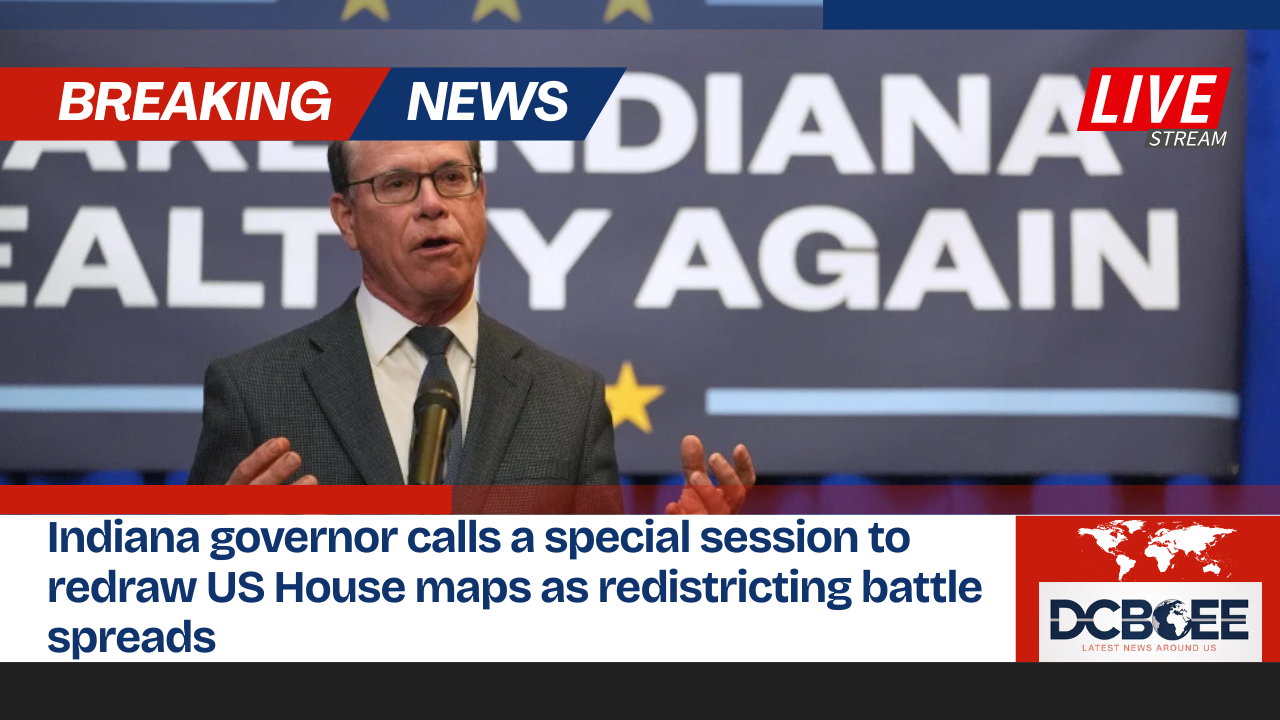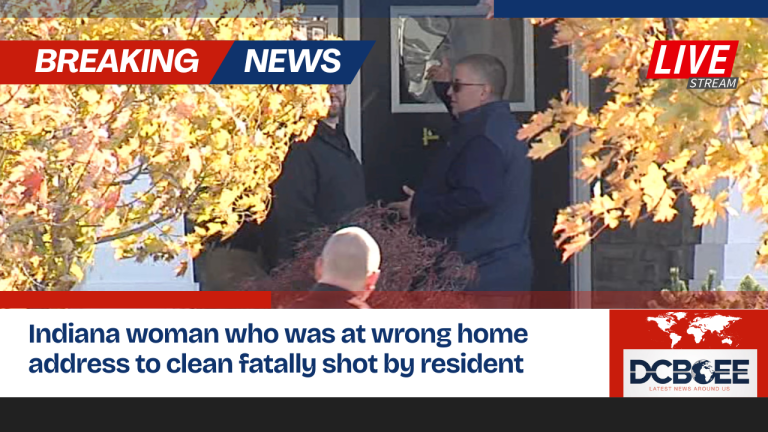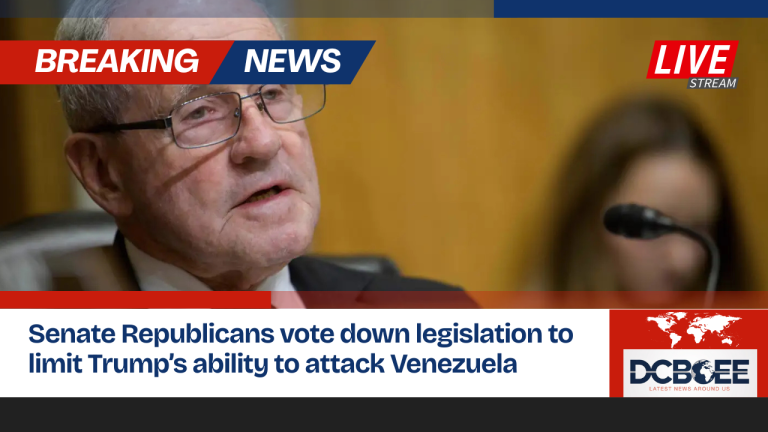
Indiana governor calls a special session to redraw US House maps as redistricting battle spreads
After weeks of pressure to support President Donald Trump’s plan to add more winnable seats via midcycle redistricting, Indiana’s Republican governor indicated on Monday that he is planning a special session to redraw congressional lines.
Trump has urged Republicans to redraw the maps so that the party has an easier time keeping control of the House in the midterms. But in certain places, like Virginia, Democrats have fought back. A special session on Monday was the first step toward redistricting.
Republicans in Texas, Missouri, and North Carolina have already formed new congressional districts, but Indiana lawmakers have been slow to do the same. The extraordinary session of the General Assembly will start on November 3, according to Indiana Governor Mike Braun. It’s not certain if enough Republicans in the Senate will support fresh maps.
To take control of the U.S. House, Democrats just need to win three more seats. Trump hopes that redistricting can help break a pattern in which the president’s party usually loses seats in midterm elections. Vice President JD Vance and Trump have visited separately with Indiana Republicans, including Senate President Pro Tem Rodric Bray, in recent months. Braun is a strong supporter of Trump in a state which the president won by 19 points in 2024. However, he had claimed before that he didn’t want to call a special session until he was sure that lawmakers would support a new map.
Republicans in Indiana have a supermajority in both houses.
In a statement on Monday, Braun said, “I am calling a special legislative session to protect Hoosiers from efforts in other states that seek to diminish their voice in Washington and ensure their representation in Congress is fair.”
After the census is over, states usually redraw the lines of congressional districts every ten years. Opponents are expected to challenge any new maps in court.
Some Indiana senators still don’t want to
When Indiana Republicans supported the existing boundaries four years ago, Bray stated they would “serve Hoosiers well for the next decade.”
A Bray spokesperson said last week that the Indiana Senate didn’t have enough votes to pass a new congressional map. On Monday, they stated that votes were still absent, which makes it unclear if a special session can help Braun reach his ambitions.
Since there are only 10 Democrats in the 50-member Senate, that means that more than a dozen of the 40 Republicans are against the concept. Some Republican state lawmakers have said that redistricting in the middle of a cycle can be expensive and could hurt their party politically.
If their colleagues support primary opponents as punishment, Republicans who vote against redistricting could lose their jobs.
The GOP could go for districts close to Chicago and Indianapolis.
There are 7 Republicans and 2 Democrats in Indiana’s congressional delegation, so it’s unlikely that they will be able to squeeze out another seat. Many Republicans, on the other hand, see redistricting as a chance for the party to win all nine seats.
The GOP would probably aim for Indiana’s 1st Congressional District, which has been a Democratic bastion for a long time and includes Gary and other communities near Chicago in the state’s northwest region.
Frank Mrvan, a Democratic U.S. Rep. in his third term, said in a statement on Monday, “I believe that representation should be earned through ideas and service, not political manipulation.”
Republicans should also focus on Indiana’s 7th Congressional District, which includes Marion County and the Democratic bastion of Indianapolis. But that option would be more problematic, perhaps dividing up the state’s largest city and reducing Black voters’ influence.
Virginia Democrats make a move toward redistricting
It takes more procedures to change Virginia’s congressional districts than it does in Indiana. There are now six Democrats and five Republicans in the state. They ran in districts set up by a court in 2021 after a bipartisan commission couldn’t agree on a map.
people must accept any changes to the redistricting process since Virginia’s redistricting commission was set up by a constitutional amendment that people approved. The General Assembly would have to vote on a proposed constitutional amendment in two different sessions before it could go on the statewide ballot. Democrats are rushing to hold the first vote of the year in the legislature so that they can hold a second vote when the new session starts on January 14.
The House changed its schedule on Monday to make room for a redistricting amendment. More information will be available later.
Schuyler VanValkenburg, a Democratic state senator, said he still supports the idea of a nonpartisan redistricting panel. “But I’m not going to let Donald Trump go to states where he has the most support and try to make it so he can’t lose,” he said.
Democrats also want to win in California. People in that state will vote on November 4 to either keep the districts chosen by an independent citizens commission or switch to ones drawn by the Democratic-led Legislature. The latter might help Democrats gain up to five more seats in next year’s election. There are already 43 Democrats in the 52 seats.
Redistricting could happen in more states.
On Monday, Hakeem Jeffries, the U.S. House Minority Leader, went to Illinois to talk to Democratic state leaders about the chance of redrawing the state’s congressional boundaries to make them even more favorable to Democrats. Democrats already have 14 of the 17 seats.
This week, the Illinois General Assembly, which is headed by Democrats, was supposed to meet.
In Kansas, on the other hand, Republicans took a step closer to bringing themselves into a special session on redistricting by filing a petition with the legislature. Senate President Ty Masterson said on Monday that he has the two-thirds he needs in the Senate, but House Republicans still have a few holdouts. The petition effort is needed because Democratic Governor Laura Kelly probably won’t summon a session to change the present map that has delivered three Republicans and one Democrat to the House.
See Also: Trump appeals his criminal conviction in New York hush money case






![My biggest AirPods Pro 3 problem has improved, how about you? [Poll]](https://dcboee.us/wp-content/uploads/2025/11/President-Faces-Impeachment-Nation-Braces-for-Political-Turmoil-67-768x432.png)
